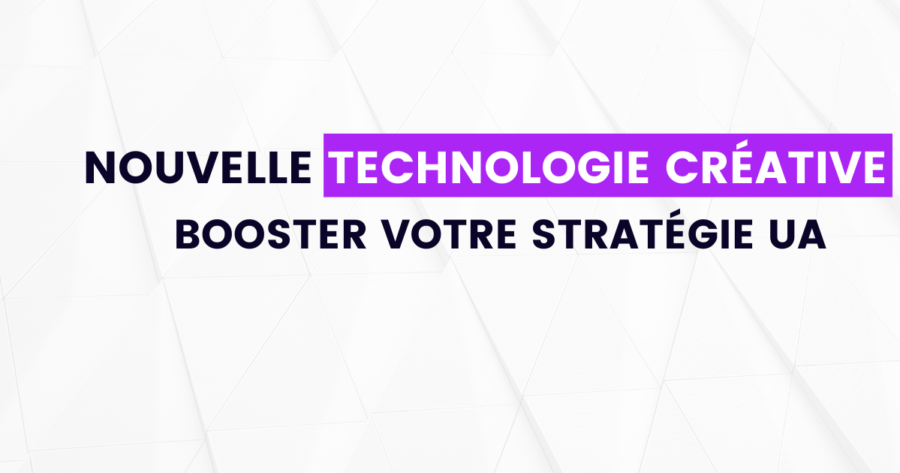Mobile Acquisition Sources: 8 Trends to Follow for Your App

In a constantly changing sector, where mobile advertisers seek to measure and generate profitability, performance user acquisition no longer has to prove itself. What are the new sources in acquisition? How to foresee the next evolutions? Find in this article the 8 trends noticed by Addict Mobile to give you the key ingredients to tomorrow’s high-performance mobile acquisition.
Facebook: The Giant
At the Facebook Marketing Summit, held in May 2019 in the Netherlands, Facebook confirmed the arrival in 2020 of advertising on the WhatsApp messaging platform. It should be integrated between stories, like it’s already the case on Instagram. However, as reported by the giant took a step backwards following the users’ dissatisfaction after the announcement. We do not know yet if the ads, app installs or other options will be released in 2020. If this is the case, the outcome should be amazing! Indeed, 1.6 billion MAUs (= Montlhy Active Users), paired with the targeting capacity of Whatsapp and the power of Facebook’s algorithm, should offer great opportunities.
Coming Soon to @WhatsApp…
— Matt Navarra (I quit X. Follow me on Threads) (@MattNavarra) May 21, 2019
– WhatsApp Status (Stories) to get Ads in 2020
– WhatsApp for Businesses to get richer messaging format options
– WhatsApp product catalog to be integrated with existing Facebook Business Manager catalog
h/t + 📸 @Olivier_Ptv
at #FMS19 pic.twitter.com/Z5LsbADNbP
Google: more and more volume available
In 2019, Google worked hard to provide the best inventories available for app advertising. How? By offering more publishing space, allowing advertisers to enjoy more and more volume.
Throughout the year, the platform had found new ways to deploy Search on iOS. The result: more volume and better performance! However, there are still some tracking problems with this new inventory, which could still limit investments in 2020.
The retargeting part — currently running beta version & already implemented at Addict Mobile — offers great opportunities by allowing to re-engage the users within the app according to their behavior. This tool is widely used on the Web but has been slow to appear on the app.
The existence of several Ad groups within the same campaign allows for a better structure of these campaigns, while bringing much more creative elements (text or visuals). It also makes it easier to distinguish the most important campaigns from the short-term campaigns set up for sales period, highlights or seasonality.
The Rise of the New Players: ASA and Snapchat
 Open to in-app advertising for more than two years, these two platforms have been constantly innovating and updating themselves to improve formats, inventories and targeted audiences. At Addict, we saw our investments triple on Apple Search Ads and double on Snapchat between 2018 and 2019.
Open to in-app advertising for more than two years, these two platforms have been constantly innovating and updating themselves to improve formats, inventories and targeted audiences. At Addict, we saw our investments triple on Apple Search Ads and double on Snapchat between 2018 and 2019.
On the one hand, the first platform (ASA) is the only source allowing for advertising on keywords in the iOS app store. This feature is much appreciated, since it allows to reach users who intend to buy a particular service. It also allows you to protect your brand to prevent another advertiser from positioning themselves on it or on all the keywords related to your activity. This explains the constant level of investment that has to be maintained to secure your position. The platform has extended advertising, during 2019, to five regions (i.e. 59 countries) and now offers targeting by city.
On the other hand, Snapchat is at the moment one of the most attractive platforms because of its innovative formats and unique audience. Indeed, it is focused on creativity: it offers 100% video (or static-animated) that allow for a lot of creativity for advertising. The CPMs are lower than other sources, which helps to generate more impressions at a lower cost. Which is a very good lever for both branding and performance. One of Snapchat’s latest studies indicates that some of their users are completely absent from other sources. This platform is therefore complementary and essential to reach this specific target.
The Pinterest Alternative
Pinterest is a rather qualitative social network. The users that can be targeted through it usually have a good purchasing power (mostly women between 25 and 40 years old) and evolve in a very visual environment. Travel, food or fashion inspirations, the platform is an interesting playground for brands with a story to tell.
What’s more, the performance-based format has clearly proven itself for campaigns that seek to measure profitability. At Addict Mobile our 2019 budget on the platform was 10 times higher than in 2018.
TikTok: a Sensational Start in The Big League

A newcomer in the world of social networking, TikTok took the 4th position in the ranking of the 2019 most downloaded apps, according to App Annie data. No wonder, as the means of communication implemented by TikTok to win new users are huge. It is an interesting app in this respect since the number of users likely to be exposed to advertising is very high. What’s more, this audience is not only international, but it is mostly made up of the new generation that brands need to capture now if they want to remain in the game for a long time.
The performance-based design has been operational in Europe since 2019 and the advertising cost is very low! So why not give it a try? Its trendy side, the power of its international audience, the low acquisition costs make it a platform that is of high interest for advertisers and that must be watched very closely.
TikTok should, like the other sources, improve its offer and platform over time and develop its algorithm and advertising layout to skyrocket in a the next few years. Let’ keep a close eye on it!
Twitter, the forgotten app of performance-based campaigns
 Although less committed to the app install formats than the other platforms, Twitter can meet very specific objectives. For media advertisers who can deal with hot news topics or for brands that want to target Japan — where the platform is widely used —, it is totally relevant, Twitter is therefore positioned as a complementary source even if the volume is sometimes limited.
Although less committed to the app install formats than the other platforms, Twitter can meet very specific objectives. For media advertisers who can deal with hot news topics or for brands that want to target Japan — where the platform is widely used —, it is totally relevant, Twitter is therefore positioned as a complementary source even if the volume is sometimes limited.
Ad-Networks facing the challenge of fraud
How to be inventive to beat fraud? This is THE big question for mobile Ad-Networks.
Two different types of Ad-Networks exist.
Gaming video Ad-Networks that broadcast advertising within gaming app. They are doing very well, because the new trends of hyper casual gaming (for everyone) and monetization through advertising allow them to feed their mobile advertising ecosystem and strengthen it. There’s a huge market for video, both for app editors, who are monetizing through it, and from advertisers who want to reach as many people as possible with in-app ads. The Ad-Networks can therefore get:
– these new app editors as additional inventory;
– new advertisers who want to reach as many people as possible with ads through their traffic.
Display Ad-Networks that run static in-app ads may be more at risk of fraud. Some are proactive in eradicating fraud, but you will still need to be very attentive if you broadcast on this type of inventory. The Ad-Networks that will ultimately be the winners will be those that implement the right behaviors: transparent traffic and proactivity in the fight against fraud. On this matter, more and more Ad-Networks are setting up their own DSPs to implement programmatic advertising and thus give themselves more visibility. However, these formats are still struggling to prove themselves in performance-based acquisition campaigns.
It has been two years since we decided, at Addict Mobile, to considerably reduce the number of our Ad-Networks partners in order to keep only the most qualitative ones and/or active on the fraud matter. Thanks to our technologies, we managed in 2019 to identify more than 600,000 fraudulent installs. It is always better to remain attentive when addressing these levers.
Market Trends for Apps and Advertisers
Hyper casual, as stated above, is one of the strongest trends in 2019. According to App Annie, 7 out of 10 “breakout games” are casual. In fact, by reaching the greatest number of people, these games generate billions of users and are getting their money mainly through in-app advertising. These apps hence need advertising to keep their business model alive. With millions of users, this generates a lot of available traffic that is used by Ad-Networks for other advertisers. This system feeds the mobile app ecosystem as well as the available ad space. This remains for the moment very focused on gaming, but could be adapted to other app types in the near future.
Gaming: in order to obtain users’ loyalty, most of non-gaming apps reproduce retention or habit mechanisms deployed by gaming players: reward and promotion systems, badge distribution, loyalty programs, etc. These are levers are meant to encourage users to come back and stay longer on the app.

ACTUALITÉS
Article en relation

Entender los datos de SKAdNetwork para mantener el…
Desde mayo de 2021 (iOS 14.5), Apple ha implementado el ATT, que limita la cantidad de datos recopilados para las campañas publicitarias. El...
Publié le 25 enero 2023
Soccer Star: Cómo adaptar tu estrategia worldwilde con…
Soccer Star es un juego de fútbol desarrollado por el estudio Redvel Games. Puedes crear tu propio jugador y vivir la experiencia de...
Publié le 10 febrero 2022
Una nueva tecnología que permite exportar vídeos en…
Con esta nueva tecnología, respondemos a uno de los principales retos de la adquisición de usuarios: la renovación continua de los visuales para...
Publié le 2 febrero 2022